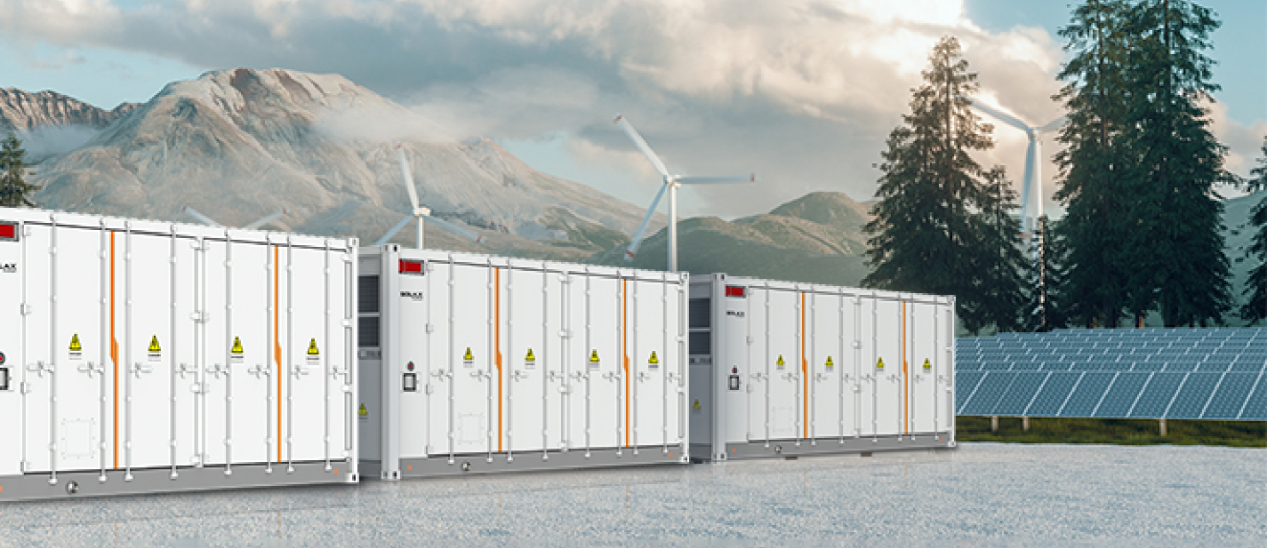The large-scale solar installations generate significant amounts of clean electricity, reducing dependency on fossil fuels and supporting a more sustainable energy future. However, designing and installing utility-scale photovoltaic (PV) systems is complex, involving various engineering, logistical, and regulatory challenges. This article discusses the key factors to consider when planning and executing utility-scale solar projects, as well as how SolaX can assist in optimizing the design and performance of these projects with advanced technology like the X3-GRAND HV inverter.
Utility-scale solar systems are large, grid-connected solar power plants that generate electricity on a scale sufficient to supply energy to thousands or even millions of people. The utility-scale solar projects require careful planning and execution across various phases—from site selection to post-installation maintenance. A well-designed utility-scale PV system not only maximizes energy output but also ensures the stability and safety of the electrical grid.
Selecting the right site for a utility-scale solar project is one of the most critical aspects of system design. Factors such as solar irradiance, topography, climate conditions, and land availability play a pivotal role in determining the potential energy generation of a solar farm. Additionally, site selection involves assessing the proximity to existing electrical infrastructure, which can influence the ease and cost of grid connection.
Utility-scale solar projects must comply with various local, state, and federal regulations. The permitting process can include environmental assessments, land-use permits, and grid connection approvals. This stage is often one of the most time-consuming, as it involves coordination with government bodies and addressing environmental concerns. A comprehensive permitting process ensures that the project adheres to safety standards and environmental guidelines.
The financial success of a utility-scale solar project depends on accurate cost forecasting and securing the necessary capital. Initial costs include purchasing land, solar panels, inverters, electrical infrastructure, and installation labor. Ongoing costs involve maintenance, monitoring, and operational expenses. Incentives, grants, and tax credits can reduce the financial burden, while careful planning around energy pricing and long-term contracts ensures a solid return on investment.
The procurement process involves selecting the right components for the system, such as solar panels, inverters, transformers, and battery storage systems (if applicable). High-quality, reliable equipment is essential to ensure the system operates at maximum efficiency and for an extended period. Engineering design ensures that the components are appropriately integrated, with a focus on maximizing energy production and minimizing losses due to system inefficiencies.
Once a utility-scale solar project is operational, ongoing operations and maintenance (O&M) are required to keep the system running at peak efficiency. It includes routine inspections, cleaning of panels, performance monitoring, and addressing any technical issues that arise. A well-managed O&M plan can extend the lifespan of the system and optimize energy output, ensuring long-term financial returns.
Utility-scale solar projects present various engineering and infrastructure challenges, which need to be addressed during the design and installation phases.
Structural Engineering Obstacles
Utility-scale solar projects require large-scale solar panel mounting structures, which must be durable enough to withstand environmental conditions such as high winds and heavy snow loads. Structural engineers must ensure that the mounting systems are optimized for the site conditions and that the solar panels are securely fastened for long-term performance.
Electrical Infrastructure Design
Designing the electrical infrastructure for a utility-scale solar project is a complex task that involves connecting solar panels, inverters, transformers, and the grid. The goal is to ensure efficient energy conversion, transmission, and minimal loss. Power conversion systems (PCS) and inverters must be chosen carefully to match the energy output and grid requirements.
Civil Engineering and Site Preparation
Before the installation of solar panels, the site must be prepared through civil engineering work such as grading, trenching, and installation of access roads. This phase ensures that the land is optimized for solar panel placement and that the infrastructure is in place for grid integration.
Common Grid Integration and Interconnection Issues
Grid integration is often a challenging aspect of large-scale solar projects. The design must ensure that the energy generated by the solar farm is compatible with grid requirements, including voltage and frequency. Additionally, there may be limitations on how much power the local grid can absorb at any given time, and managing these factors is essential to avoid overloading the system.

As utility-scale solar projects become increasingly complex, partnering with a reliable and innovative technology provider like SolaX can significantly enhance the efficiency and success of the installation. SolaX offers advanced solutions such as the X3-GRAND HV inverter, designed specifically to meet the demands of large-scale solar power plants.
The X3-GRAND HV inverter is engineered to deliver superior performance in utility-scale PV systems. It features up to 99% efficiency, ensuring maximum energy conversion and minimal losses. With a wide voltage range and 6 MPPTs (Maximum Power Point Trackers), this inverter optimizes the energy capture from diverse solar panel configurations, providing flexibility in design and maximizing energy yield.
The X3-GRAND HV is also built for outdoor installation, with robust weatherproofing to ensure reliability in all environmental conditions. Additionally, its advanced monitoring capabilities allow for real-time tracking of performance, enabling operators to quickly identify and resolve issues, ensuring continuous optimal operation.
Designing and installing utility-scale solar systems requires careful attention to every detail, from site selection to equipment procurement and grid integration. By addressing the key engineering and infrastructure challenges and partnering with reliable technology providers like SolaX, utility scale solar developers can optimize the efficiency and longevity of their solar power plants. The X3-GRAND HV inverter offers the innovation and performance necessary for today’s large-scale solar projects, ensuring that they meet both financial and sustainability goals.